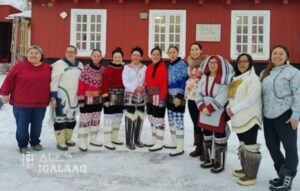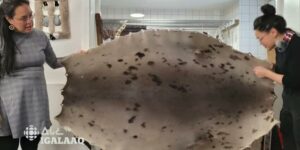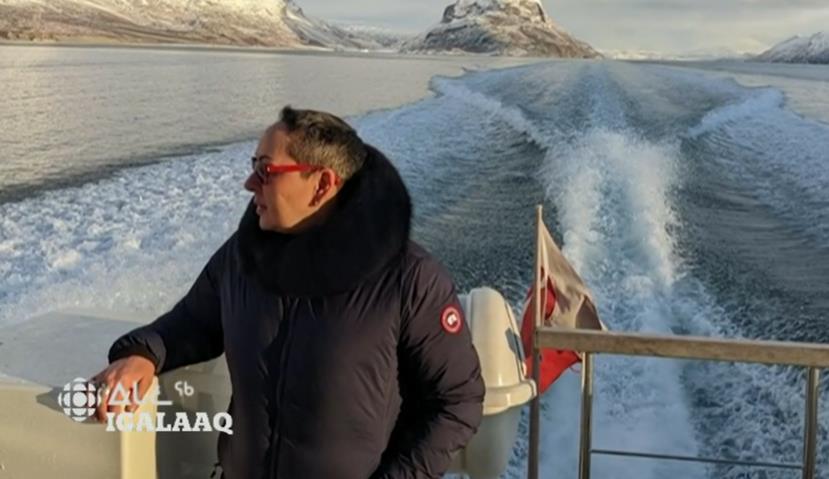In this interview, CBC Igalaaq talks with Emily Tagoona about the need for seal skin processing centres in Nunavut. This piece was translated by her daughter, Lori Tagoona, Senior Associate with MakeWay’s Northern program.
Pauline Pemik: Welcome Emily Tagoona, thank you for joining us. I understand you went to Greenland to learn about Greenlandic approaches to sewing and processing seal skins. First, can you tell us how you became involved in this project?
Emily Tagoona: This year I was on Facebook, watching videos of Greenlandic Inuit working on seal skins. I was surprised to see their facility, knowing we don’t have seal skin processing centres like that in Nunavut. We have programs and teach in our homes, but we don’t have dedicated spaces for working on seal skins. I really want this for our communities in Nunavut and I started asking myself: how do we get this? How do we start this?
My panik works at MakeWay Foundation and they support Inuit ways of being and knowing, so I asked her how we can go to Greenland so we can see the seal skin processing facility. She found out through the Government of Nunavut Fisheries & Sealing Division that they were organizing a working group to travel to Greenland to learn more. She asked if we could join them, and the seal skin working group said yes.
 Pauline: Because you were able to join the group, who was in your group? And where did you go? Were you able to go to other communities?
Pauline: Because you were able to join the group, who was in your group? And where did you go? Were you able to go to other communities?
Emily: There were two other groups: Country Food and Ports. We travelled with the womens group focus on seal skins. The other women were from Iqaluit, while my panik and I came for the Kivalliq. We all flew to Nuuk together, but the other groups went up to Sisimiut, and we went to Qaqortoq. To get to Qaqortoq, we flew to Narsarsuaq, and then because our flight was cancelled, we ended up taking a boat to Qaqortoq. Here we saw a commercial tannery for softening seal skins. Then we went back by helicopter. We traveled all kinds of ways.
Pauline: Wow, it was so fun to see you and your panik’s photos as you posted on Facebook. What was most memorable, or what do you feel like you learned the most? How was being there in person different than observing online at a distance?
Emily: I was surprised to learn that even in Nuuk, they’re losing the knowledge of how to do things traditionally. Nuuk is huge, with 20,000 people, it’s as big as Yellowknife. They’re so modernized. But there’s a small group of women who are still keeping the traditions of working with skins alive. The clothing that they made was mostly for special occasions, not daily wear. But in the smaller communities they still make functional ware.
 And the way they work on the skins, their process is different. They want absolutely no oil or blood in their finished products, so it can take three to five years to complete a skin. Whereas when we work on skins, we can finish them much faster. We’re not so concerned about the skins smelling like oil, as this helps keep them functional and waterproof.
And the way they work on the skins, their process is different. They want absolutely no oil or blood in their finished products, so it can take three to five years to complete a skin. Whereas when we work on skins, we can finish them much faster. We’re not so concerned about the skins smelling like oil, as this helps keep them functional and waterproof.
Also, on Facebook, through their pictures and videos, I always imagined a grand space. I imagine a big space that was expensive to build. But it’s not, they are small spaces that you can work in. I thought we couldn’t get this unless we build a huge expensive space. They’re using small spaces and that’s enough.
Now that I know this, this is something I want to push for. It’s very achievable, I plan to lobby our leaders, planners, educators, government and Inuit organizations. They need to work together, and it would benefit children, men, women and elders.
